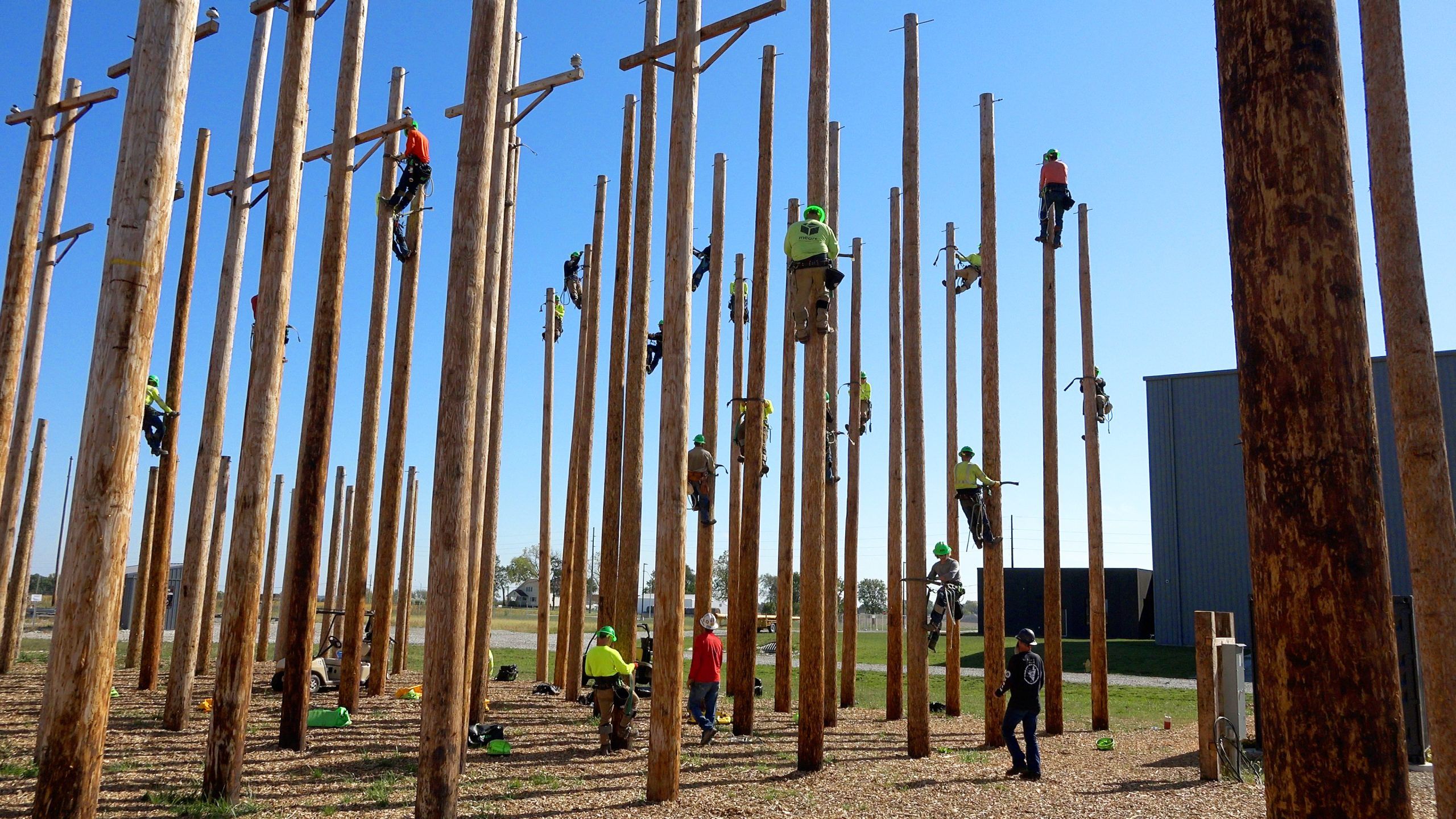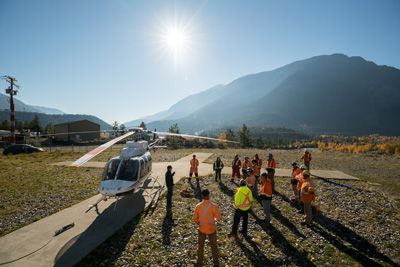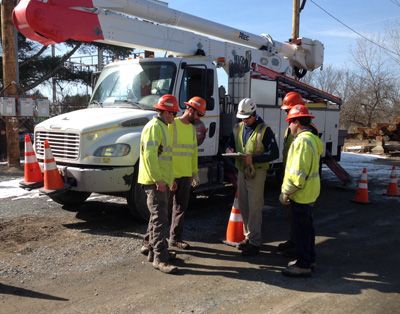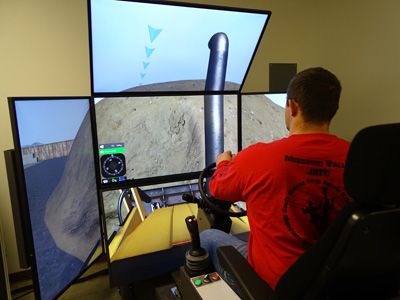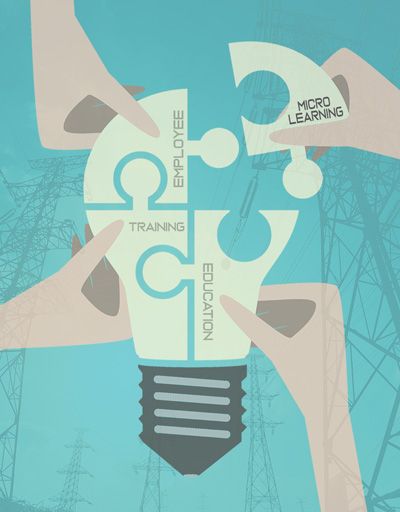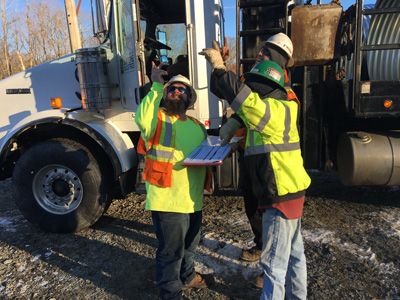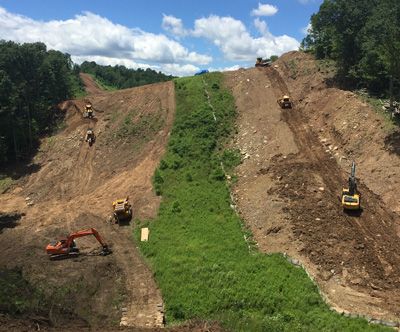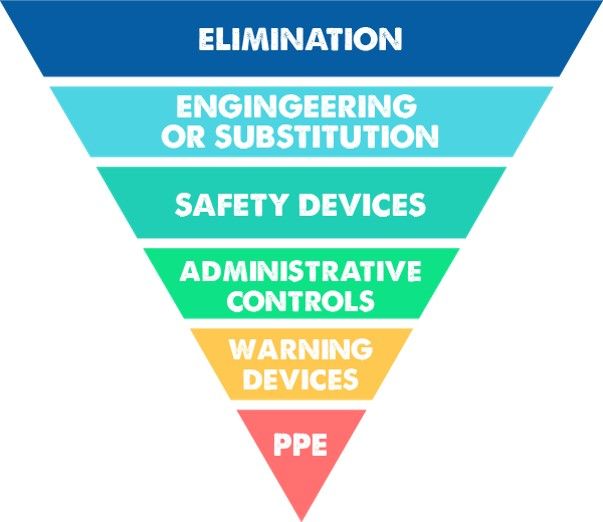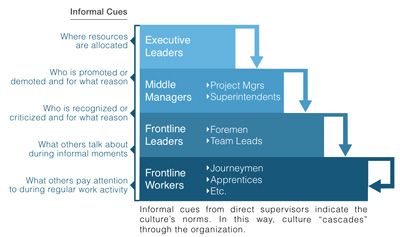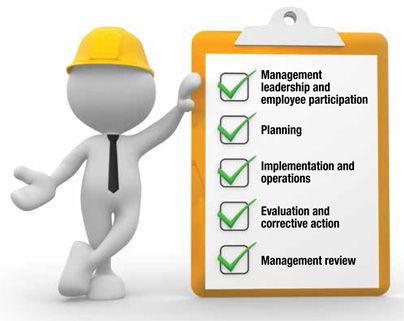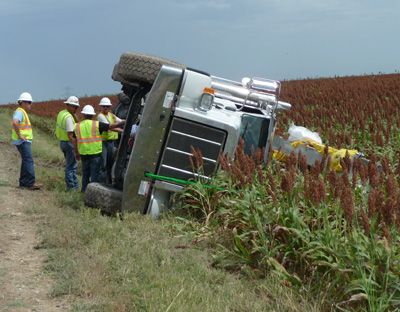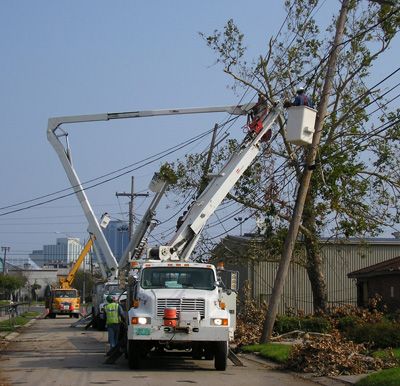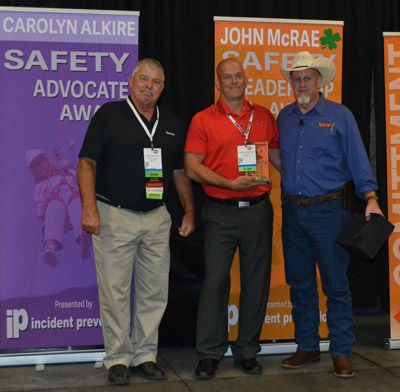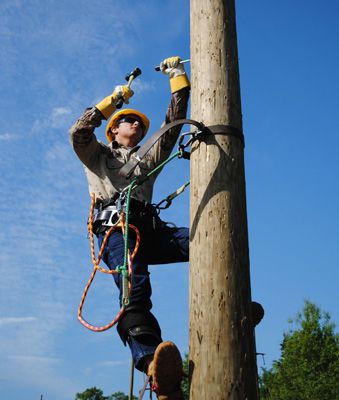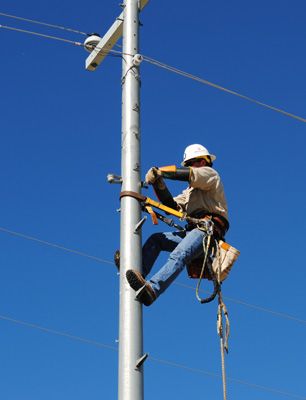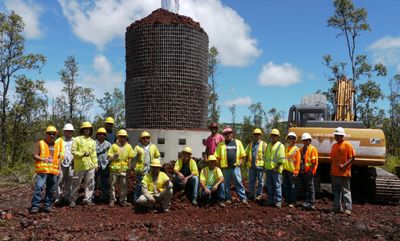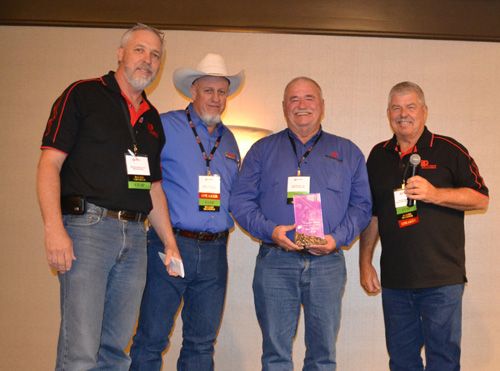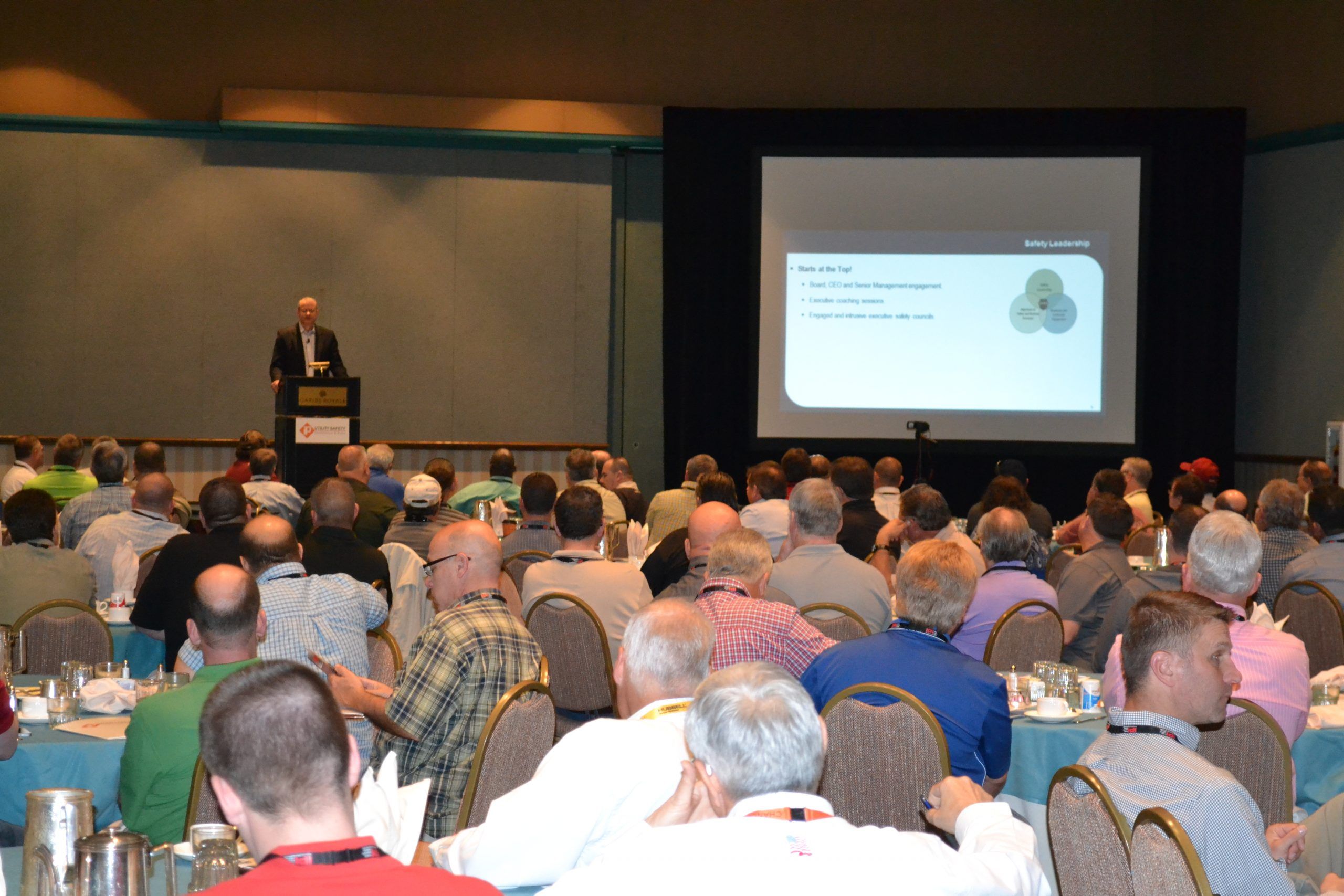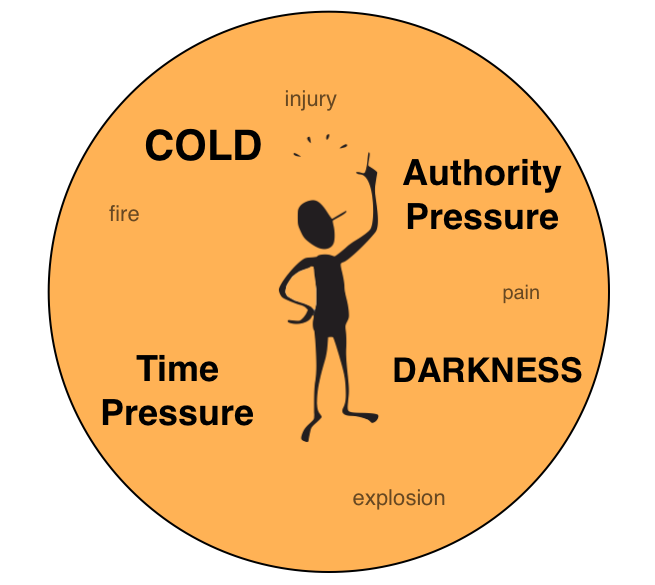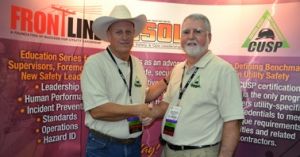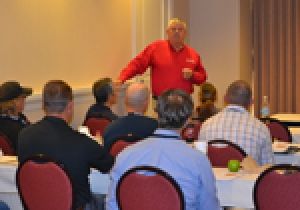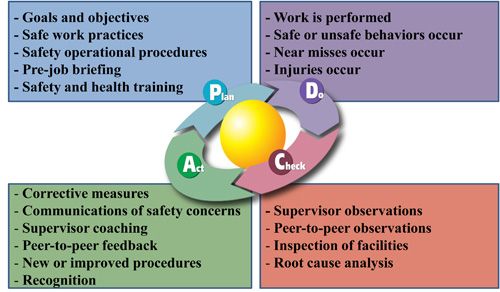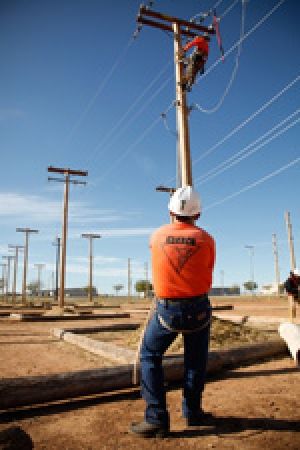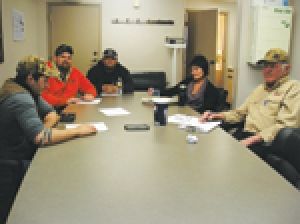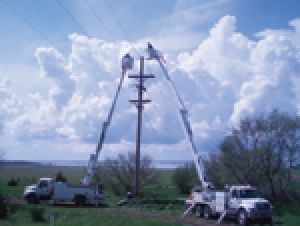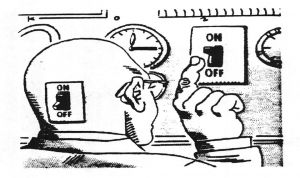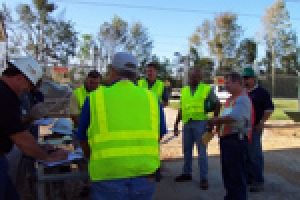Tag: Leadership Development
Using a Learning Management System to Augment Lineworker Training
Written by Kenneth Pardue on . Posted in Leadership Development.
Does Positive Feedback Improve Safety?
Written by Sharon Lipinski on . Posted in Leadership Development.
‘But I Don’t Wanna’: 6 Sources of Employee Resistance
Written by Sharon Lipinski on . Posted in Leadership Development.
Just Like the Real Thing: Training the Next Generation of Lineworkers
Written by Curtis Marquardt on . Posted in Leadership Development.
3 Keys to Transforming Safety and Organizational Performance
Written by Devin Bennett, Ph.D. on . Posted in Leadership Development.
A Lineworker’s Three Safety Superpowers
Written by Bill Martin, CUSP, NRP, RN, DIMM on . Posted in Leadership Development.
Creating a Culture of Safety Through Elite Leadership
Written by Frank Brinkley on . Posted in Leadership Development.
Lessons Learned from the Tenerife Airport Disaster
Written by Dwight Miller, CLCP, CUSP on . Posted in Leadership Development.
Human Error and Organizational Resilience
Written by Jim Martin, CRSP, CUSP, CCPE on . Posted in Leadership Development.
Collaborating for Safety
Written by John Adkisson on . Posted in Leadership Development.
The Antidote to Complacency and Familiarity
Written by Sharon Lipinski on . Posted in Leadership Development.
Is a Better Job Brief Possible?
Written by Bill Martin, CUSP, NRP, RN, DIMM on . Posted in Leadership Development.
Building and Delivering Effective Safety Courses
Written by Skylar Ely on . Posted in Leadership Development.
Exploring Human Judgment and Its Impact on Safety
Written by Bill Martin, CUSP, NRP, RN, DIMM on . Posted in Leadership Development.
Using Simulators to Standardize Utility Operator Training
Written by David Clark on . Posted in Leadership Development, Equipment Operations.
Feedback and Accountability in the Disciplinary Process
Written by Mack Turner, CUSP on . Posted in Leadership Development.
How to Build a High-Performing Team
Written by Bob McCall on . Posted in Leadership Development.
Microlearning: Another Critical Piece of the Employee Training Puzzle
Written by Bart Castle on . Posted in Leadership Development.
Frontline Fundamentals: HP Principle Four: People Influence Each Other
Written by David McPeak, CUSP, CIT, CHST, CSP, CSSM on . Posted in Leadership Development, Frontline Fundamentals.
Solving the Safety Culture Puzzle
Written by Andrea M. Guadarrama, MBA, STS on . Posted in Leadership Development.
Frontline Fundamentals: HP Principle Three: You Cannot Outperform Your Organization
Written by David McPeak, CUSP, CIT, CHST, CSP, CSSM on . Posted in Leadership Development, Frontline Fundamentals.
Overcoming the Effects of Short-Service Employees
Written by Jesse Hardy, CSP, CIT, CUSP on . Posted in Leadership Development, Tailgate Topics.
Frontline Fundamentals: HP Principle Two: Your Crystal Ball
Written by David McPeak, CUSP, CIT, CHST, CSP, CSSM on . Posted in Leadership Development, Frontline Fundamentals.
Frontline Fundamentals: HP Principle One: People Screw Up
Written by David McPeak, CUSP, CIT, CHST, CSP, CSSM on . Posted in Leadership Development, Frontline Fundamentals.
Avoiding the Silent Danger: Three Skills for Improving Your Safety Culture
Written by Steve Willis on . Posted in Leadership Development.
Frontline Fundamentals: Measure What You Want
Written by David McPeak, CUSP, CIT, CHST, CSP, CSSM on . Posted in Leadership Development, Frontline Fundamentals.
Overcoming the Effects of Rapid Growth
Written by Jesse Hardy, CSP, CIT, CUSP on . Posted in Leadership Development.
Frontline Fundamentals: Organizational Culture: What Caves Can Teach Us
Written by David McPeak, CUSP, CIT, CHST, CSP, CSSM on . Posted in Leadership Development, Frontline Fundamentals.
The Human Error Trap
Written by Phillip Ragain on . Posted in Leadership Development.
Frontline Fundamentals: Responsibility for Safety
Written by David McPeak, CUSP, CIT, CHST, CSP, CSSM on . Posted in Leadership Development, Frontline Fundamentals.
Frontline Fundamentals: Risk Tolerance
Written by David McPeak, CUSP, CIT, CHST, CSP, CSSM on . Posted in Safety Management, Leadership Development, Worksite Safety, Frontline Fundamentals.
The Silent Secret About Successful Safety Communication
Written by Mark J. Steinhofer, CHST, CSP, CUSP on . Posted in Safety Management, Leadership Development.
February 2017 Q&A
Written by Jim Vaughn, CUSP on . Posted in Safety Management, Leadership Development, Worksite Safety, Q & A, Equipment Operations.
Frontline Fundamentals: Controlling Hazards
Written by David McPeak, CUSP, CIT, CHST, CSP, CSSM on . Posted in Safety Management, Leadership Development, Frontline Fundamentals.
Assimilating Short-Service Employees Into Your Safety Culture
Written by Phillip Ragain on . Posted in Safety Management, Leadership Development, Worksite Safety.
Does Your Company Have an Effective Safety Management System?
Written by Pam Tompkins, CSP, CUSP on . Posted in Safety Management, Leadership Development.
Optimizing Your Safety Observation Program
Written by Thomas Arnold, CSP, CUSP on . Posted in Safety Management, Leadership Development.
The Road to an Innovative, Award-Winning Safety Program
Written by Brad Stout and Jesse Gibbon on . Posted in Safety Management, Leadership Development, Worksite Safety.
10 Tips for Better Incident Investigations
Written by Thomas Ray, CSP, CUSP on . Posted in Safety Management, Leadership Development, Worksite Safety, Tailgate Topics.
The Job Brief’s Hidden Influence on Utility Safety
Written by Michael Burnham, CSP, CUSP on . Posted in Safety Management, Leadership Development, Worksite Safety.
Don’t Leave Employees to Fill in the Blanks
Written by Dave Sowers on . Posted in Safety Management, Leadership Development, Worksite Safety.
Field-Level Hazard Recognition Training That Works
Written by Mike Caro, CUSP on . Posted in Safety Management, Leadership Development, Worksite Safety.
The CUSP Program Expands to Canada
Written by Chris Grajek, CRSP, CUSP, and John Price, B.Kin., CRSP, CUSP on . Posted in Safety Management, Leadership Development.
Understanding Your Safety DNA
Written by Neil Dempster, CSP, MBA, Ph.D. on . Posted in Safety Management, Leadership Development, Worksite Safety.
Train the Trainer 101: Safety Cops and the Continuum of Safety
Written by Jim Vaughn, CUSP on . Posted in Safety Management, Leadership Development, Worksite Safety, Tailgate Topics.
Understanding Safety Culture Through Perception Surveys
Written by Matt Edmonds, CUSP, CIT, CHST, and Pam Tompkins, CSP, CUSP on . Posted in Safety Management, Leadership Development.
2015 USOLN Safety Award Winners Announced
Written by Kate Wade on . Posted in Safety Management, Leadership Development.
Recruiting and Training the Next Generation
Written by Jerry Havens, COSS on . Posted in Leadership Development.
Shifting Your Organizational Safety Culture
Written by Phillip Ragain on . Posted in Safety Management, Leadership Development.
Stepping Up Steel Safety Education
Written by Keith Lindemulder on . Posted in Safety Management, Leadership Development, Worksite Safety.
Facing Unique Challenges
Written by Kekai Batungbacal, CUSP on . Posted in Safety Management, Leadership Development, Worksite Safety.
The Safety Side Effect: How Good Supervisors Coincidentally Improve Safety
Written by Phillip Ragain on . Posted in Leadership Development.
Growing a Human Performance Culture
Written by David W. Bowman on . Posted in Safety Management, Leadership Development.
2014 USOLN Safety Award Winners Announced
Written by Kate Wade on . Posted in Safety Management, Leadership Development.
Behavior-Based Safety: What’s the Verdict?
Written by Mike Caro, CUSP on . Posted in Safety Management, Leadership Development.
Elements of an Effective Safety Committee
Written by Richard J. Horan Jr., CSP, CUSP on . Posted in Safety Management, Leadership Development.
Injury Prevention Through Leadership, Employee Engagement and Analytics
Written by Mike Engelman on . Posted in Safety Management, Leadership Development.
Understanding and Influencing the ‘Bulletproof’ Employee
Written by Phillip Ragain on . Posted in Safety Management, Leadership Development, Worksite Safety.
Learning Leadership: Personal Protective Emotional Armor: Part 2
Written by Parrish Taylor on . Posted in Leadership Development.
Train the Trainer 101: Practical Elements for Developing a Safety Culture
Written by Jim Vaughn, CUSP on . Posted in Safety Management, Leadership Development.
Learning Leadership: Personal Protective Emotional Armor: Part 1
Written by Parrish Taylor on . Posted in Leadership Development.
2013 USOLN Safety Award Winners Announced
Written by Kate Wade on . Posted in Safety Management, Leadership Development.
Spice It Up!
Written by Richard Hawk on . Posted in Leadership Development.
Leadership Skill Set 5: Social Persuasion
Written by Parrish Taylor on . Posted in Leadership Development.
Learning Leadership: Leadership Skill Set 4: Social Awareness
Written by Parrish Taylor on . Posted in Leadership Development.
Passing the CUSP Exam
Written by Jim Vaughn, CUSP on . Posted in Leadership Development.
Learning Leadership: Leadership Skill Set 3: Self-Motivation
Written by Parrish Taylor on . Posted in Leadership Development.
Learning Leadership: Leadership Skill Set 2: Self-Regulation
Written by Parrish Taylor on . Posted in Leadership Development.
Evaluating Crew Supervisors
Written by Ronald J. Schenk, CUSP on . Posted in Leadership Development.
Learning Leadership: Leadership Skill Set 1: Self-Awareness
Written by Parrish Taylor on . Posted in Leadership Development.
Learning Leadership: The Leadership Paradigm Shift
Written by Parrish Taylor on . Posted in Leadership Development.
How Six Sigma Can Improve Your Safety Performance
Written by Ted Granger, CSSBB, CUSP on . Posted in Leadership Development.
Voice of Experience: Safety Excellence Equals Operational Excellence
Written by Danny Raines, CUSP on . Posted in Leadership Development, Voice of Experience.
Oh, No! Changes in the Workplace
Written by Andrew G. Green and Pam Tompkins, CSP, CUSP on . Posted in Leadership Development.
That’s What I Meant to Say: Safety Leadership in Communication
Written by Tim D. Self, CUSP on . Posted in Leadership Development.
Apprenticeship Training
Written by Chuck Woodings, CUSP on . Posted in Leadership Development.
Behavior Safety Training for Safety Committee Members
Written by Michael S. Haro, Ph.D., CBSS on . Posted in Leadership Development.
Integrity and Respect: Two of Our Most Important Tools
Written by Mike Caro, CUSP on . Posted in Leadership Development.
The Value of Safety Certification
Written by David McPeak, CUSP, CIT, CHST, CSP, CSSM on . Posted in Leadership Development.
Effective Customer Relationships for Crew Leaders
Written by Ronald J. Schenk, CUSP on . Posted in Leadership Development.
T&D Safety Management for Crew Leaders
Written by Ronald J. Schenk, CUSP on . Posted in Leadership Development.
CUSP Basics: Introduction to Human Performance Principles
Written by Tyrone Tonkinson, Ph.D., P.E. on . Posted in Leadership Development.
T&D Best Practices for Crew Leaders
Written by Ronald J. Schenk, CUSP on . Posted in Leadership Development.
Safety Circuitry: The Power in the Brain
Written by Michelle Brown on . Posted in Safety Management, Leadership Development.
Cultivating a Mature Workforce
Written by Parrish Taylor on . Posted in Leadership Development.
Human Behavior and Communication Skills for Crew Leaders
Written by Ronald J. Schenk, CUSP on . Posted in Leadership Development.
Supervisory Skills for Crew Leaders
Written by Ronald J. Schenk, CUSP on . Posted in Leadership Development.
Crew Foreman Needed: Who Do We Pick?
Written by Ronald J. Schenk, CUSP on . Posted in Leadership Development.
Innovate or Follow: The Argument Against A Best Practice
Written by Shawn Galloway on . Posted in Leadership Development.
Keeping the ‘Fighter Pilots’ of Your Company Safe
Written by Jeff "Odie" Espenship on . Posted in Safety Management, Leadership Development.
Training for the New Century
Written by Jim Vaughn, CUSP on . Posted in Leadership Development.






